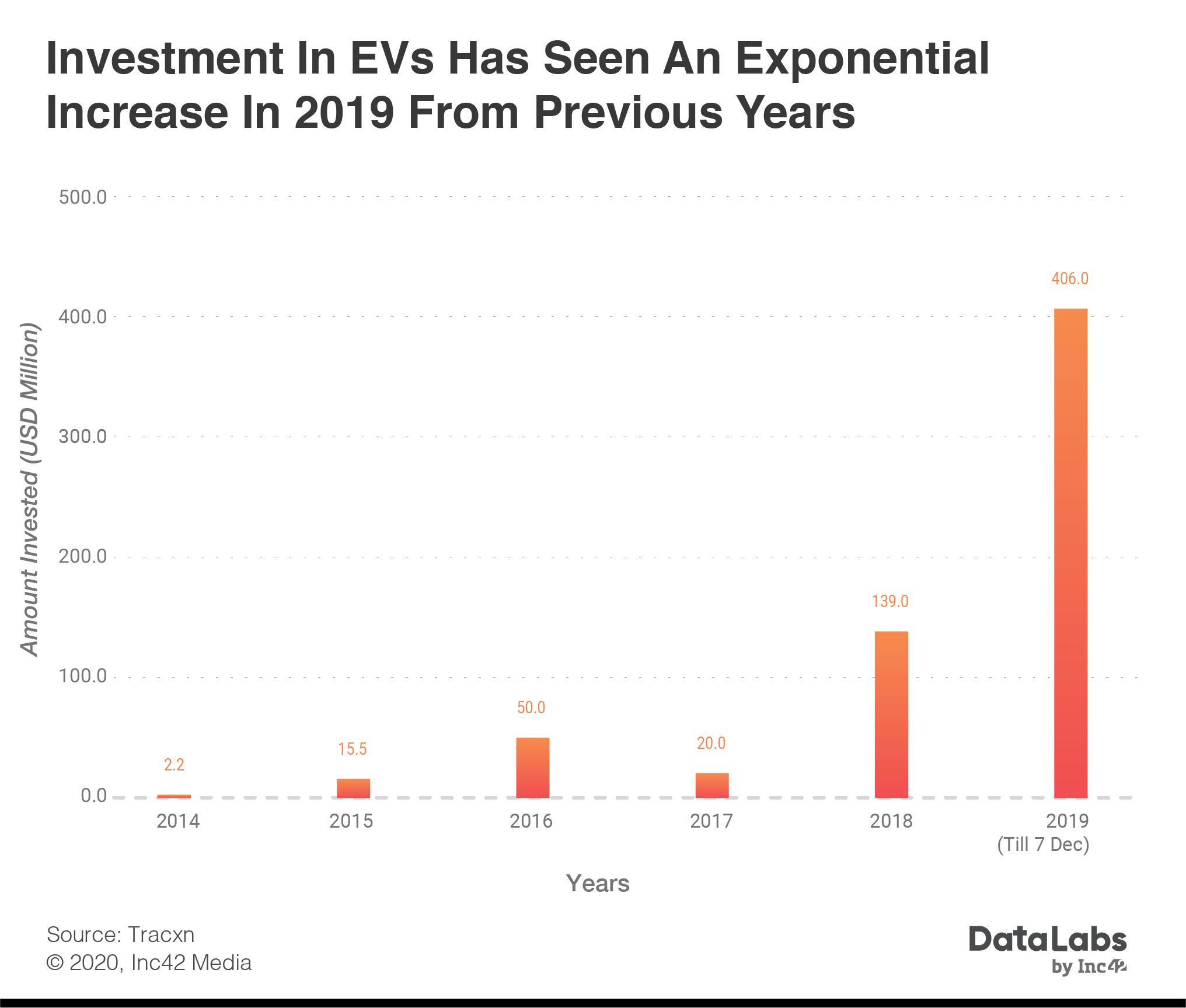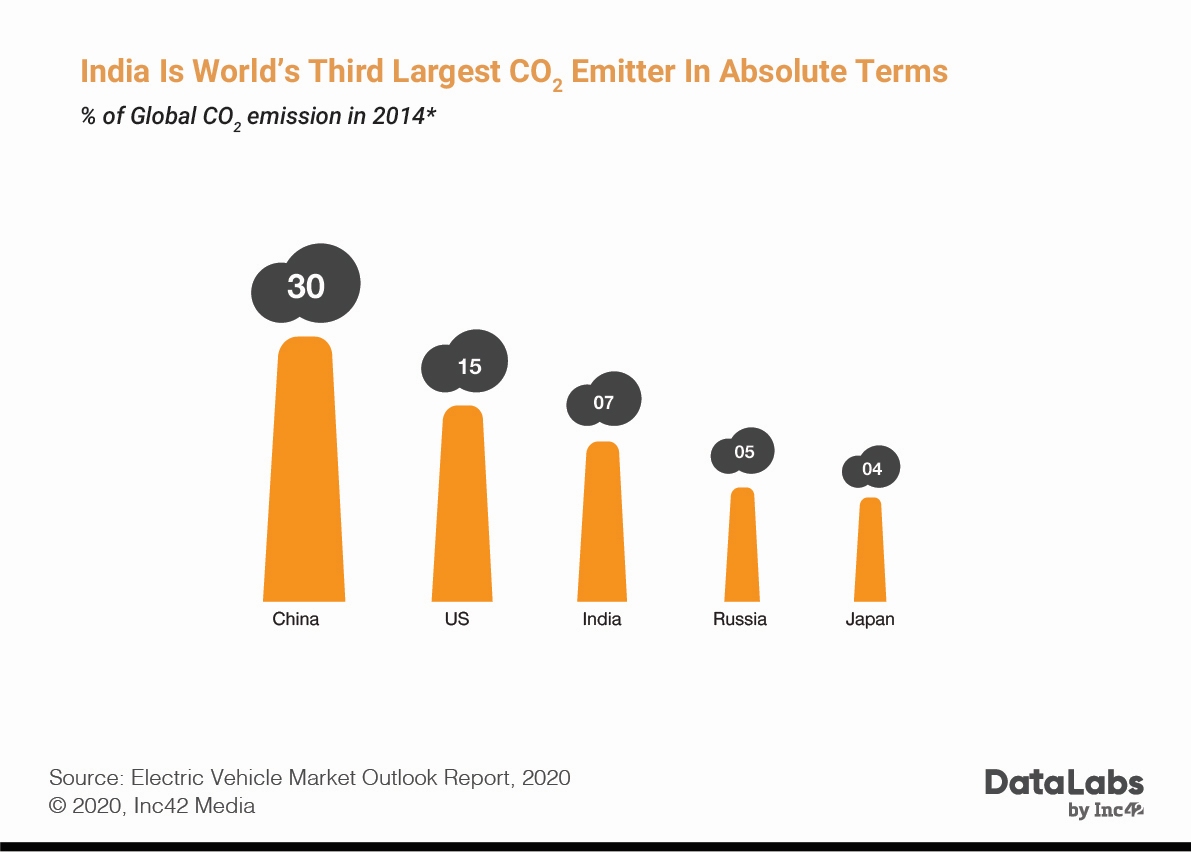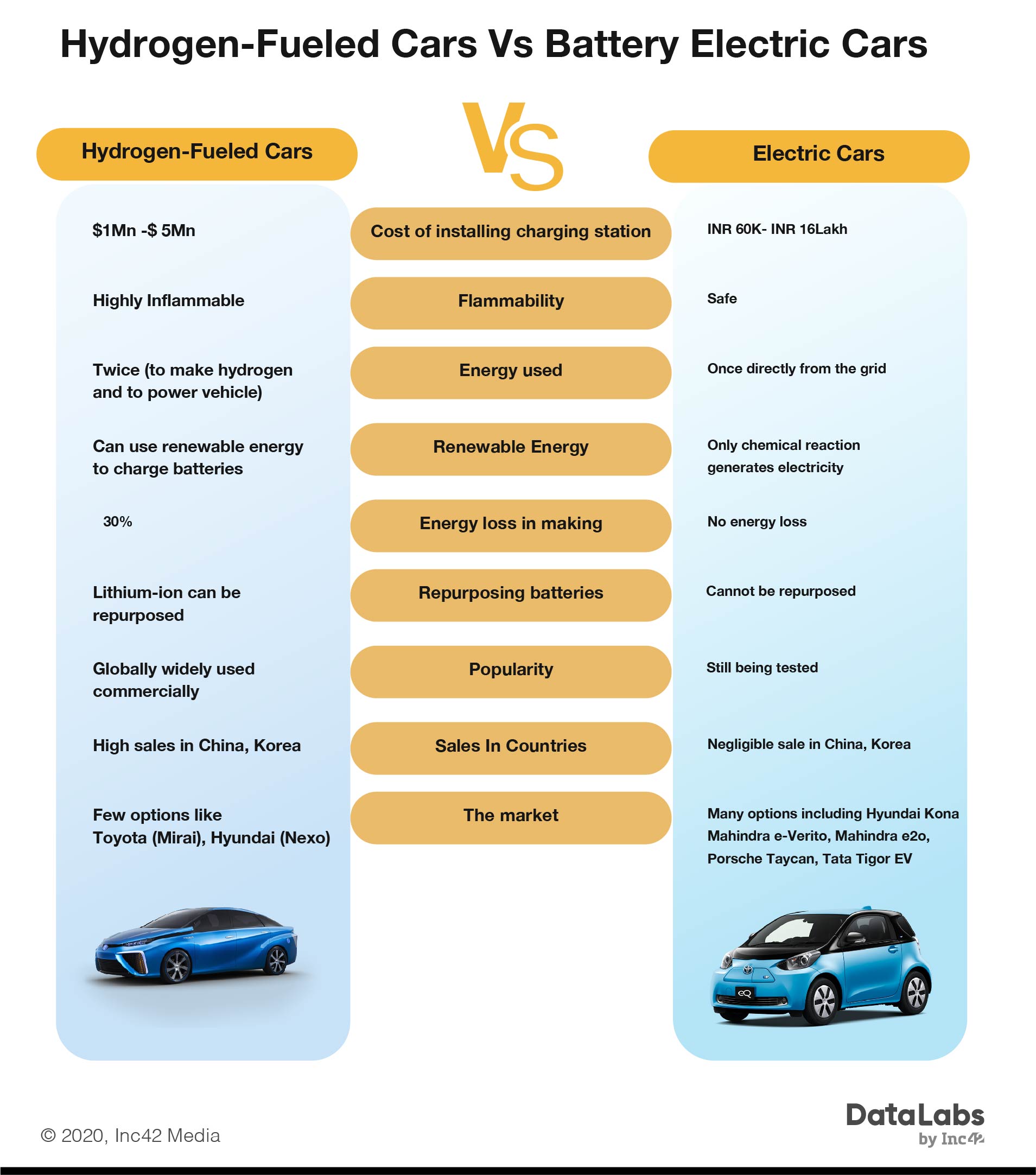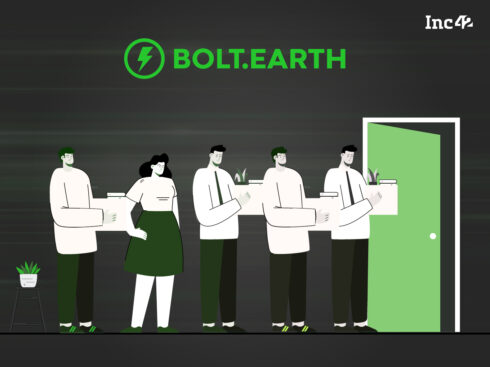SUMMARY
Besides Centre’s EV policy, Kerala, Telangana and nine other states have designed comprehensive policies
Many players, including homegrown Tata Motors and South Korea’s Hyundai, have lately stepped up plans to create an EV ecosystem
Investment in EV startups has grown from $20 Mn in 2017 to $406 Mn in 2019
India is one of the major consumer markets in the world today. According to a World Economic Forum report, it is poised to become the world’s third-largest consumer market by 2030, with consumer spending growing to $6 Tn, from $1.5 Tn in 2018. Yet, Indian cities are far from being counted among the EV capitals around the globe today. Why so?
According to a report by the International Council On Clean Transportation (ICCT), nearly 50 per cent of the world’s electric vehicle sales are concentrated in 25 global cities touted as the EV capitals of the world.
Startups in India are, however, spearheading a revolution in this area; India is soon expected to join the league of EV capitals. Some of the notable startups that manufacture two-wheelers or work in areas such as battery tech, vehicle diagnostics and analytics as well as charging are Ola Electric Mobility, a unit of Bengaluru-headquartered ride-hailing company Ola, Bengaluru-based Ather Energy, Tamil Nadu-based Ampere, Gurugram-based 22 KYMCO and Mumbai-based ION Energy.
In 2019, the electric vehicle segment in India saw few significant developments, as the authorities approved a INR 10,000-Cr programme under the FAME-II (Faster Adoption and Manufacturing of Electric Vehicles) scheme for the promotion of electric and hybrid vehicles, and several auto makers stepped in to boost the country’s automobile manufacturing ecosystem.
Here are some of the developments that took place in the EV segment in 2019:
Central And State Government Policies
Besides the Centre, as many as 11 state governments — including Kerala and Telangana came up with comprehensive policies on electric vehicles. Several states set goals to attract huge investments for the EV segment.
Tamil Nadu’s EV policy earmarks investment of INR 50,000 Cr in the manufacturing of EVs and development of a comprehensive ecosystem for the segment in the state, a programme estimated to create 1.5 lakh jobs. Similarly, the Uttar Pradesh government’s EV policy encourages the use of hybrid as well as plug-in electric vehicles during the transition phase, and aims at setting up a network of two lakh charging points (fast, slow and swapping) by 2024. It also envisages taking the number of electric vehicles plying on road to 1 Mn across categories by 2030, including the replacement of 70 per cent of the public transport fleet with electric vehicles.
Centre’s Focus On Manufacturing
The government has been emphasising on the need to scale up electric vehicle manufacturing. According to a Niti Aayog report, the country needs a minimum 10 GWh of cells by 2022, and about 50 GWh by 2025. The government has proposed a five-year programme to promote the development of plants that support large-scale manufacturing of competitive, integrated batteries and cells in phases till 2024.
Till December 2019, electric vehicle companies around the globe secured nearly $40 Bn in investment. In India, the investment in EV startups soared to $406 Mn in 2019 surged from $20 Mn in 2017. With a funding of $300 Mn, Ola Electric Mobility emerged the biggest beneficiary of that investment spree. Ola was followed by startups such as Ather Energy, Twenty-Two Motors, Lithium Cabs, Yulu, Zypp and SmartE.

Emergence Of Electric Rickshaws
The success of low-maintenance, homegrown e-rickshaws by manufacturers such as Kinetic Green and Mahindra has been an inspiration for EV startups. India’s fleet of battery-operated three-wheelers has expanded from 4,000-strong in 2010 to more than 1.5 Mn within less than a decade. Every month, 11,000 electric rickshaws are produced, according to consulting firm AT Kearney.
India’s ‘Cleanest’ Answer To The Ever-Increasing Pollution
Alarming Pollution Levels
Air pollution causes more than 1.2 Mn deaths in the country every year, according to a report by Greenpeace. One of the most amicable answers to this problem today is the transition to EVs. Running on battery-powered engines, electric vehicles are considered 100 per cent emission-free, which means they do not release any toxic gases into an environment that is already in a critical state in several parts of the country.

Electricity From Non-Green Sources
Is electricity really a green source of energy if it is generated from the non-renewable? In most developing nations, electricity is produced through environmentally-damaging means such as coal power plants. Even in India, much of the electricity in the country’s national grid is generated using non-green sources. However, on the brighter side, with a lower number of components at around 20, electric vehicles are considered more silent than conventional vehicles. Though not as big a concern today as air pollution, noise pollution can also be harmful.
Harmful Materials Used In Batteries
Mining and processing of metals such as lithium, copper, manganese and nickel requires energy which can release certain toxic compounds. “Battery production uses a lot of energy, from the extraction of raw materials to the electricity consumed in manufacture. The bigger the electric car and its range, the more battery cells are needed to power it, and consequently the more carbon produced,” Alekhya Datta, fellow-electricity and fuels division at The Energy and Resources Institute (TERI) tells Inc42.
Efforts Towards Cleaner Sources
Ideally, the first step towards transitioning from traditional internal combustion vehicles to EV counterparts should be deployment of solutions generating clean energy. However, efforts are being made to switch to renewable sources of energy. For instance, state-owned Indian Oil Corporation (IOC) is looking to enhance the country’s capacity for developing indigenous batteries powered with new metals. Metal-air batteries produce energy by oxidising metals such as iron, zinc and aluminium.
India can adopt a programme similar to the San Diego Zoo in San Diego, California, in which as many as 10 solar photovoltaic (PV) canopies have been installed since 2012, providing EV users access to charging stations and when not in use, storing solar energy in a separate battery system. Automakers such as TVS Motor Company in India are also working towards harnessing solar and wind energies.
Startups Race To Resolve Charging Infrastructure Challenges
A Hesitant Customer Of A Hesitant Manufacturer
According to the China Electric Vehicle Charging Infrastructure Promotion Alliance, China had 4,66,101 public charging points by the end of September 2019, with more than 54,000 in Beijing alone. India has dismally low numbers.
The lack of charging infrastructure in India has resulted in customers still hesitant to adopt electric vehicles. Rudratej Singh, president and CEO of BMW Group India, says that the infrastructure for electric vehicles in India is still ambiguous and uncertain, which affects the price and acceptability of this segment among its consumers. Toyota stopped manufacturing electric and hybrid cars for the Indian market for the same reason.
Waves Of Change
However, many companies have stepped up their plans to create an EV ecosystem. In December 2019, Hyundai announced a plan to invest $17 Bn on new technologies over the next six years to speed up the switchover to electric and autonomous vehicles. In July 2019, at the launch of Hyundai Kona, the company pledged to invest $200 Mn (more than INR 1,400 Cr) over the next three years to develop affordable electric vehicles for the Indian market.
The Tata Group has announced plans to make electric cars and batteries, set up charging stations and build a battery recycling plant. Four Tata group companies – Tata Motors, Tata Chemicals, Tata Power and Tata Croma – have joined hands to build an electric vehicle ecosystem.
According to the Energy Efficiency Services, by 2030, around 79 Mn EVs (across the two-, three- and four-wheeler segments) will ply on the roads and 8 Mn public charging stations (including all types of chargers) will be installed.
The EES will be setting up 2,600 charging stations by December 2020 – each comprising at least six charging points. “While this targets only major cities, the next phase will be energising national highways and subsequently Tier-II and Tier-III cities,” Animesh Mishra, head of sales at the Energy Efficiency Services, tells Inc42.
Slow & Fast Charging
The Ministry of Power has adopted all three of the charging standards currently followed by auto makers in the country: Japan’s CHAdeMO, Europe’s Combined Charging System (CCS) and the homegrown Bharat Standard. According to the state-owned Energy Efficiency Services, which is the world’s largest public-sector energy service company, India will have 79 Mn electric vehicles plying on the roads, and 8 Mn slow and fast public charging stations will be installed by 2030.
However, for the development of a proper EV ecosystem, startups for long sought standardisation in order to enable all EVs chargeable at any of the stations. They may require connectors and converters, but the problem can very much be addressed as seen in the US and the EU. The quality of the electricity coming in from the grid plays a pivotal role in eliminating the charge anxiety.
But is India ready to deploy an electric vehicle charging infrastructure comparable with the likes of US and Europe?
“The electric vehicle charging infrastructure in the country cannot be copy-pasted from international solutions. Challenges like heat, humidity, harmonics and humans are unique for the Indian ecosystem,” Maxson Lewis, co-founder and managing director at Magenta Power and ChargeGrid, tells Inc42 in an earlier interview. “Additionally, we have a low takeoff, which pushes electric charging station operators to focus on business outcomes.”
Hybrid, Battery Electric Or Fuel Cell Electric Vehicles: What Is India Choosing?
Electric vehicles are classified into two main categories: all-electric vehicles and plug-in hybrid electric vehicles.
- All-Electric Vehicles (AEVs): These are vehicles with only an electric motor. These vehicles can be further classified into two sub-categories:
Battery electric vehicles (BEVs): These are fueled by electric energy stored in rechargeable lithium-ion batteries.
Fuel cell electric Vehicles (FCEVs): These vehicles are operated on electric energy stored in batteries that derive power from fuel cells, in which the chemical energy of hydrogen gets converted to electrical energy. - Plug-in Hybrid Electric Vehicles (PHEVs): These vehicles are operated with a combination of an electric motor and an internal combustion engine (ICE).
Lithium-ion batteries used by most EVs should have an ideal operating temperature of 25 degrees celsius. In countries like India where temperatures are above 30 degrees in many cities and most of the year, lithium-ion batteries can wear out faster, lasting only two-three years. Though hybrid vehicles run on the very same batteries, their battery consumption is lesser, which is why they last longer.

However, the primary reason for transitioning to electric vehicles from the contemporary ICE-based vehicles is emissions. Electric vehicles exude zero direct emissions. In many countries including India, coal, oil, and natural gas are the primary sources of commercial energy, which is why electric vehicles can never be 100 per cent emission-free. Still, they are better than their hybrid counterparts which rely in part on fuel-run engines, and less polluting in terms of CO2 emissions even after taking into account their lifecycle.
FCEVs, on the other hand, have zero emissions like BEVs. But again, EVs have an edge in terms of cost and viability, as fuel cells haven’t reached commercial maturity. Fuel cell charging stations are difficult to deploy, and cost between $1 Mn and $5 Mn.
“When compared to the hydrogen-fuelled cars, EVs have a more prominent mindshare and presence in the market. The same reason allows EVs to be a more economical bet than their latest counterpart,” tells Greg Moran, CEO and co-founder, Zoomcar.
Two- And Three-Wheelers, State Transport Units To Drive EV Adoption
Latest trends suggest a rising interest for electric cars among the masses in comparison to electric two-wheelers and ICE (petrol-/diesel-based) cars. However, mass adoption is expected to start with two-wheelers and three-wheelers.
“During 2018, 79 per cent of all vehicles sold in India were scooters. Once people see that the shift to two-wheelers is not only silent but also economical, this will create an impetus for the shift from cars,” said Akhil Aryan, co-founder and CEO of ION Energy.
Additionally, state transport units (STUs) are being pitched as the solution for transitioning to EVs across geographies. STUs have already started running electric fleets, both intra- as well as inter-city (within a distance of 300 kilometres). With a government push, EV penetration is expected to start in tandem with public transport, specifically in the STU and three-wheeler segments.
According to a NITI Aayog report, there is a unique prevalence of small vehicles – such as two-wheelers, three-wheelers, economy four-wheelers, and small carriers of goods – in India



























